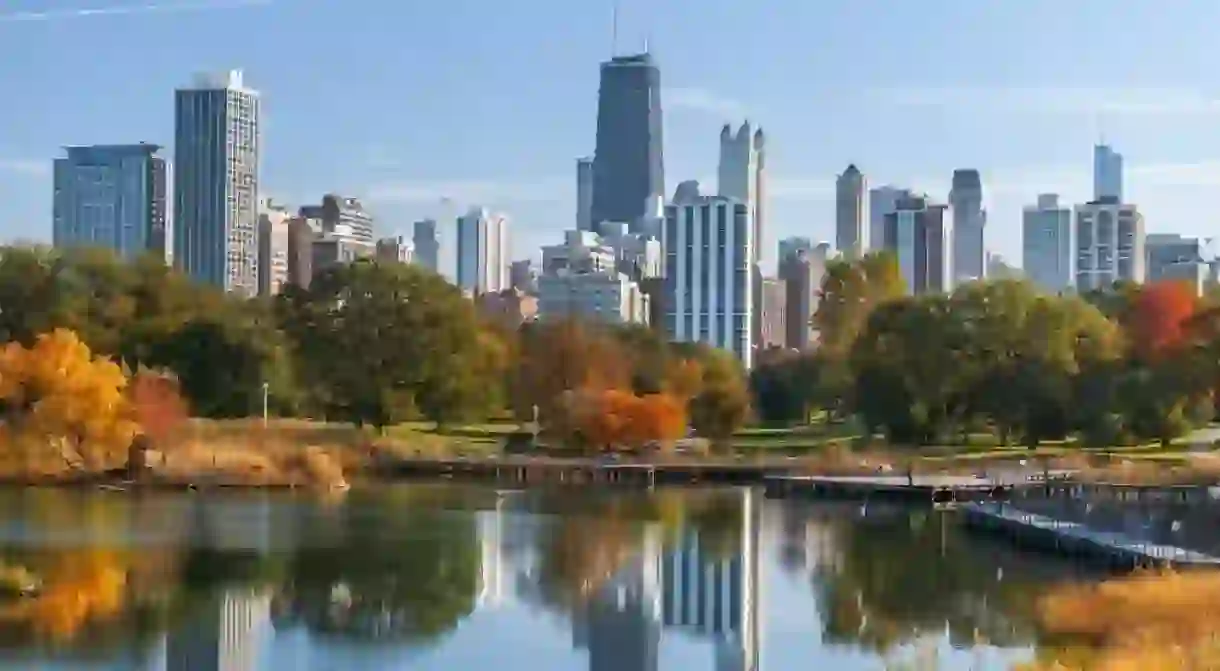The 15 Best Places To Enjoy Fall Colors in and Around Chicago

When you’re surrounded by concrete and glass instead of green space – as you often are in Chicago – you can easily miss out on the fantastic foliage of the fall. So if you’re in the Windy City, make sure you see in the new season by stopping to smell the roses (or, rather, gaze at the trees) in its most spectacular natural areas. Read on for Culture Trip’s pick of the top spots to see fall foliage in and around Chicago.
Chicago Botanic Garden
Botanical Garden

Garfield Park Conservatory
Park

Grant Park
Park
Another top spot to admire fall colors in Chicago is the 312-acre (126-ha) Grant Park, situated in the heart of the city’s Financial District. As well as being home to one of the world’s largest fountains (the Buckingham Memorial Fountain) and leading museums such as the Art Institute of Chicago and the Field Museum of Natural History, the park also offers several natural areas in which to admire the changing leaf colors of elms, hawthorns and maples. Be sure to also check out the cockspur hawthorns in the Art Institute’s South Garden.
Evanston
Architectural Landmark, Natural Feature
If you fancy getting out of Chicago to admire the annual change of leaf colors, head to Evanston, an attractive commuter town located a half-hour drive north of the Windy City. Recommended spots, especially during the peak of the season, are the expansive gardens of Northwestern University, the three-lined central artery of Ashbury Avenue, Dawes Park and the 23-acre (9.3-ha) Ladd Arboretum, where you’ll find species such as elm, maple, oak and pine wearing their finest fall attire. The arboretum’s Cherry Tree Walk is also at its best during the fall months.
Lincoln Park
Architectural Landmark
Occupying a 7-mi- (11-km-) long stretch of the Lake Michigan shoreline to the north of Downtown, the 1,188-acre (481-ha) Lincoln Park is the largest public green space in Chicago. It was named after President Abraham Lincoln soon after his assassination in 1865, and offers visitors the opportunity to witness the changing leaf colors of its maples, ashes, birches and elms. Other key attractions include the Lincoln Park Zoo – open 365 days a year – the Lincoln Park Conservatory and the Peggy Notebaert Nature Museum for family-friendly fun.
Morton Arboretum
Library, Park, Museum

If you’re looking for the ultimate nature immersion during the fall, head to the Morton Arboretum, located in the town of Lisle a half-hour drive west of Chicago. Founded in 1922 by salt magnate Joy Morton, its unspoilt natural spaces are spread over 1,700 acres (688ha) and feature over 4,000 species of tree. Among the most striking of these during the annual change in leaf colors are bur oaks, walnut and willows. Flora buffs will also love browsing the specialist library, which holds almost 30,000 volumes on plants, flowers and trees.
Winnemac Park
Park
LaBagh Woods
Forest
An area of untamed beauty located a 20-minute drive north of Downtown Chicago, LaBagh Woods provides the perfect escape from the city. Most of its territory consists of densely wooded areas populated by large oaks, maples and cottonwoods, which explode into color during the fall, their colors changing from refreshing greens to vibrant oranges and reds. Other natural areas include wetlands, savannas and sedge meadows. To explore this wild region and admire the fall colors, go hiking or biking on the 20-mi (32-km) North Branch Trail System.
The 606
Hiking Trail, Park

Jackson Park
Museum, Park
North Park Village Nature Center
Park, Natural Feature
Humboldt Park
Park

Graceland Cemetery, North Clark Street
Cemetery
Millennium Park
Park
Situated in the heart of Downtown, Millennium Park is one of Chicago’s most famous public spaces. Occupying a 25-acre (10-ha) site on the northern extremity of Grant Park, its elms, hawthorns and maples are particularly striking during the fall, especially those found close to Anish Kapoor’s Cloud Gate sculpture (also known as The Bean). Once you’re done admiring the trees’ changing colors, check out the 2.5-acre (1-ha) urban oasis that is the Lurie Garden and the Frank Gehry-designed Jay Pritzker Pavilion, which hosts the city’s largest outdoor music events.
Burnham Park
Park
Located on the lakeshore between Jackson Park (to the south) and Grant Park (to the north) is the 653-acre (264-ha) Burnham Park. Beautiful trees can be seen pretty much anywhere within this vast green space, but the best spot to witness the annual changing of the leaves is Promontory Point, a man-made peninsula jutting out into Lake Michigan. From here, you can admire a dense bank of aspens and maples, set against the backdrop of Downtown’s glinting skyscrapers. The contrast of grey metal and glass and bright foliage is especially dramatic in mid-October.
Additional reporting by Mark Nayler













